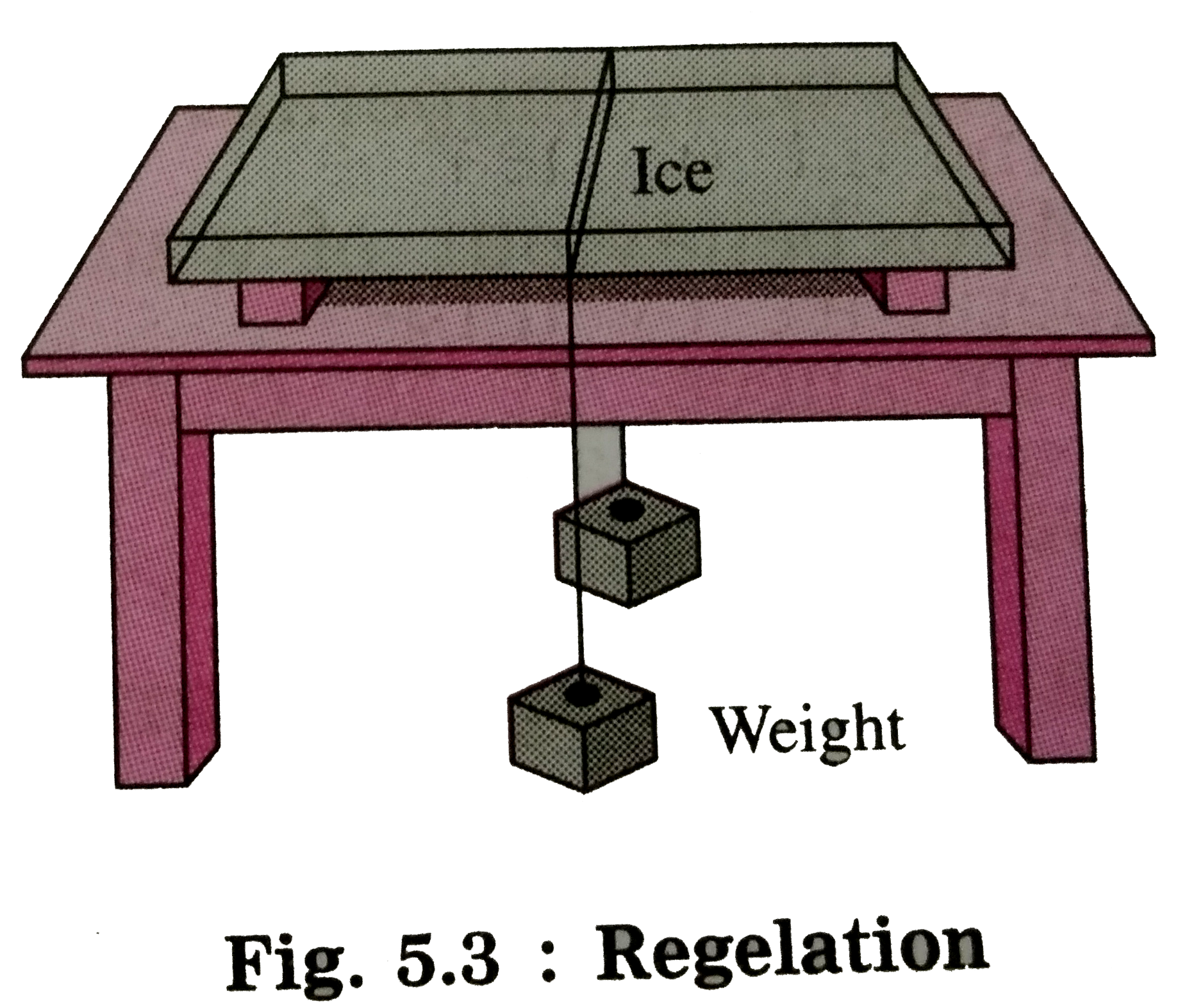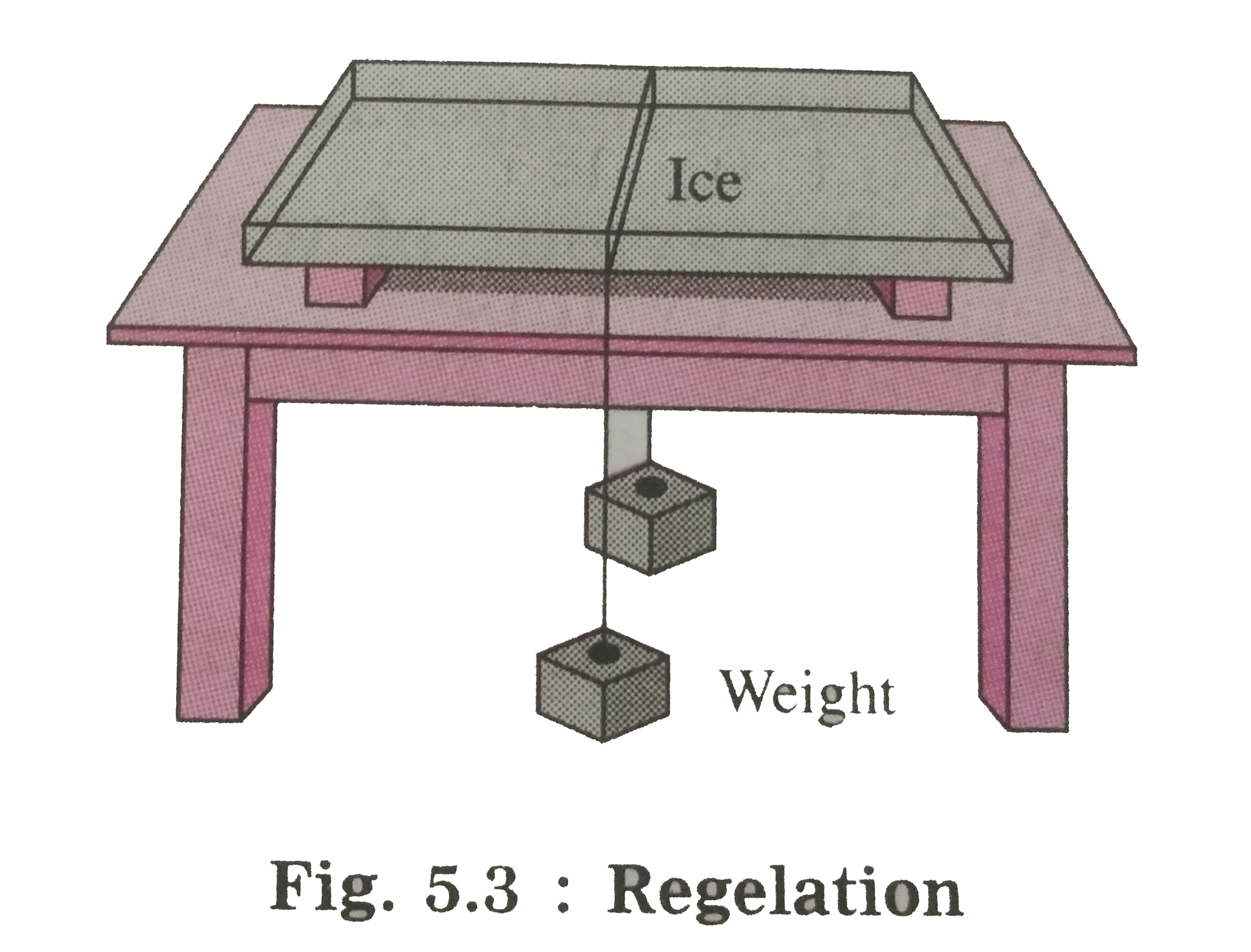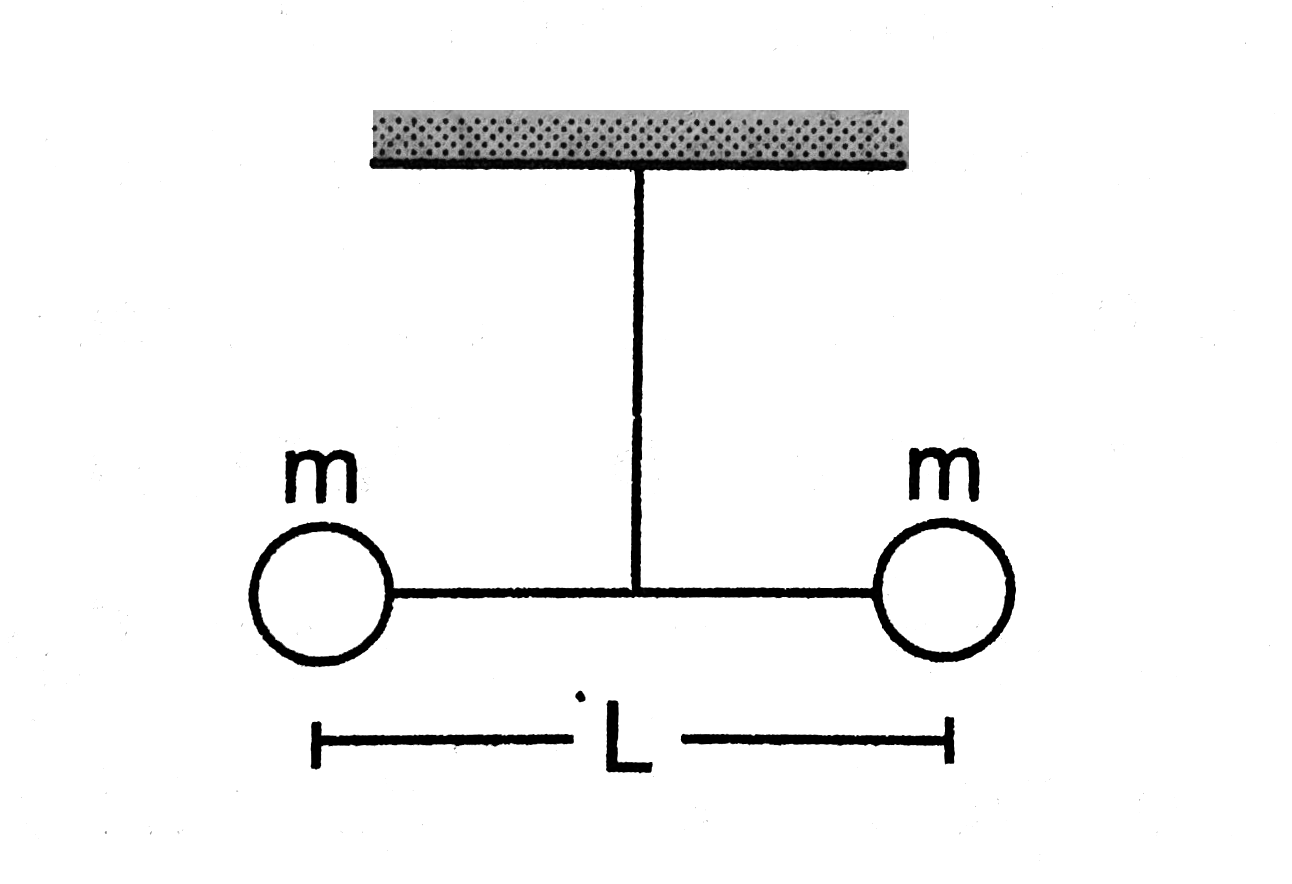Take a small slab of ice, a thin wire, two identical weights.
In the above experiment, the wire moves through the ice slab. However, the ice slab does not break. Why ?

When the thin wire with two equal weights attached to its ends is hung over the block of ice, it exerts pressure on the ice below it. Due to this, the melting point of ice below the wire is lowered and some ice melts. The wire passes through the water so formed. The water above the wire is no longer under pressure and, therefore,refreezes. Once again the ice below the wire melts, and the wire passes through it, and the process continues. In this way, due to alternate melting of ice and refreezing of water, the wire cuts right through the block of ice leaving the block intact.
Topper's Solved these Questions
- HEATBOOK - NAVNEET PUBLICATION - MAHARASHTRA BOARDCHAPTER - HEATEXERCISE - Textbook page 65
6 Videos
- HEATBOOK - NAVNEET PUBLICATION - MAHARASHTRA BOARDCHAPTER - HEATEXERCISE - Textbook page 66
29 Videos
- HEATBOOK - NAVNEET PUBLICATION - MAHARASHTRA BOARDCHAPTER - HEATEXERCISE - Textbook page 63
2 Videos
- GRAVITATION BOOK - NAVNEET PUBLICATION - MAHARASHTRA BOARDCHAPTER - GRAVITATION EXERCISE - Solve the following examples/numerical problems :
37 Videos
- LAWS, RULES, UNITS AND DEFINITIONS BOOK - NAVNEET PUBLICATION - MAHARASHTRA BOARDCHAPTER - LAWS, RULES, UNITS AND DEFINITIONS EXERCISE - Carbon Compounds
18 Videos
Similar Questions
Knowledge Check
Write the following steps of an activity in sequence to show that water is a bad conductor of heat.
(A) Clamp the test tube in slanting position and heat the test tube near its mouth with Bunsen burner.
(B) This shows that heat is not conducted through water and water is a bad conductor of heat.
(C) Take a hard glass tube containing cold water filled up to 3/4 of its length and drop small pieces of ice, wrapped in copper wire gauge
(D) It is observed that water near the mouth of the test tube starts boiling but the ice does not melt.AABCDBDCBACADCBDCADBOne healf of a slab of ice is covered with black cloth and the other half with white cloth This is then placed in sunlight After some time the pieces of cloth are removed Then .
Aice has melted equally under both the piecesBmore ice has melted under white clothCmore ice has melted under black clothDit will depend on the medium in which ice is placed
In the experiment described on page 64 of your textbook, the wire moves through the ice slab. However, the ice slab does not break. Why?
View SolutionIn the experiment described on page 64 of your textbook, the wire moves through the ice slab. However, the ice slab does not break. Why?
View SolutionTake a small slab of ice, a thin wire, two identical weights. Activity :
(1) Put a slab of ice on a stand as shown in figure.
(2) Hang two equal weights to the two ends of a metal wire and put the wire on the slab as shown in the figure.
What do you observe ?

View SolutionTake a small slab of ice, a thin wire, two identical weights. Activity :
(1) Put a slab of ice on a stand as shown in figure.
(2) Hang two equal weights to the two ends of a metal wire and put the wire on the slab as shown in the figure.
Define regelation.
OR
What is regelation ?

View SolutionIf you sling a thin wire loop around a block of ice and attach to it a weight of several kilograms then after some time the wire will pass through the block of ice, but the block remains intact (Fig. 23.2). Explain this phenomenon.
View SolutionTwo small balls, each of mass m are connected by a light rigid rod of length L. The system is suspended from its centre by a thin wire of torsional constant k. The rod is rotated about the wire through an angle θ0 and released. Find the tension in the rod as the system passes through the mean position.

View Solution
